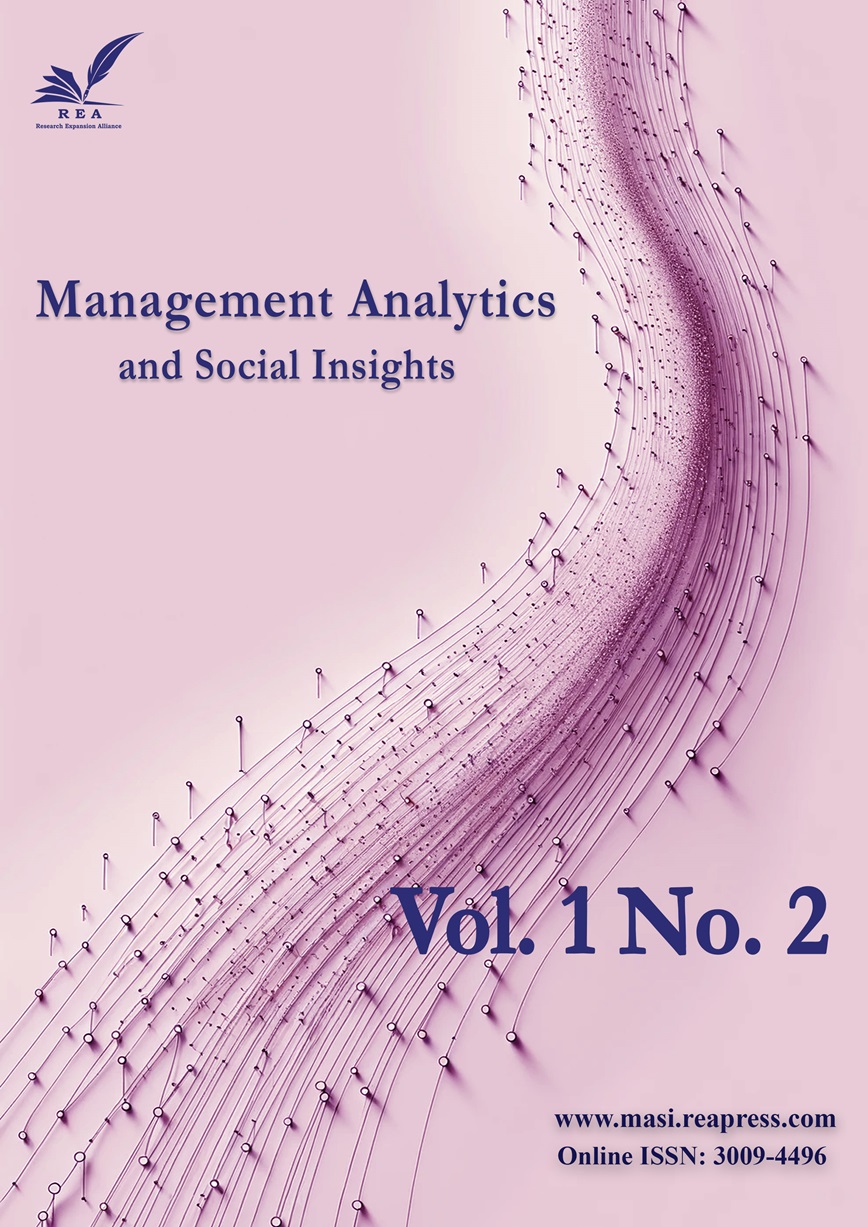Management of 3D Printing Processes: Enhancing Pick-and-Place Machine Quality with Taguchi and Principal Component Analysis
Abstract
3D printing techniques are now thriving and extensively used in producing cultural and creative individualized goods. In the present economic development of Taiwan, the electronics manufacturing industry has the highest output value. This study aimed to introduce 3D printing techniques in the electronics manufacturing sector, taking the printing of automatic insertion parts clip bodies as an example. The assembling will fail if an object's quality characteristics fail to meet the standard. This study established four key quality characteristics: the inside diameter of the left and right holes, the outside diameter of the locating point, the height of the locating point, and the middle recess thickness. The tolerance determination of the Taguchi quality loss method was used to establish the manufacturer tolerance of the print object. A printing parameter optimization experiment was then conducted to upgrade the overall quality. Principal Component Analysis (PCA) was used to propose the optimum parameter combination: PLA material, a fill thickness of 0.16mm, a wall thickness of 0.8mm, a bottom/top thickness of 1.2mm, an infill density of 50%, a printing speed of 20mm/s, and an extruder head temperature of 220℃. Finally, the benefit was assessed, considering the required cost for production, including the purchase cost, depreciation, amortized cost, creation of the 3D model file, the labour cost of operating the printer object subsequent surface treatment and component assembly, and the material cost for the print object and support structure.
Keywords:
3D printing, Automatic insertion, Manufacturer tolerance, Taguchi method, Benefit assessmentReferences
- [1] Bogue, R. (2013). 3D printing: the dawn of a new era in manufacturing? Assembly automation, 33(4), 307–311. https://doi.org/10.1108/AA-06-2013-055
- [2] Chen, J. C., & Gabriel, V. S. (2016). Revolution of 3d printing technology and application of six sigma methodologies to optimize the output quality characteristics. International conference on industrial technology (ICIT) (pp. 904–909). Taipei, Taiwan. IEEE. https://doi.org/10.1109/ICIT.2016.7474872
- [3] Sanatgar, R. H., Campagne, C., & Nierstrasz, V. (2017). Investigation of the adhesion properties of direct 3D printing of polymers and nanocomposites on textiles: effect of FDM printing process parameters. Applied surface science, 403, 551–563. https://doi.org/10.1016/j.apsusc.2017.01.112
- [4] Zhang, Y., Qian, Z. S., Sprei, F., & Li, B. (2016). The impact of car specifications, prices and incentives for battery electric vehicles in Norway: choices of heterogeneous consumers. Transportation research part c: emerging technologies, 69, 386–401. https://doi.org/10.1016/j.trc.2016.06.014
- [5] Panda, B., Shankhwar, K., Garg, A., & Savalani, M. M. (2019). Evaluation of genetic programming-based models for simulating bead dimensions in wire and arc additive manufacturing. Journal of intelligent manufacturing, 30, 809–820. https://doi.org/10.1007/s10845-016-1282-2
- [6] Zhang, Y., Bernard, A., Harik, R., & Karunakaran, K. P. (2017). Build orientation optimization for multi-part production in additive manufacturing. Journal of intelligent manufacturing, 28, 1393–1407. https://doi.org/10.1007/s10845-015-1057-1
- [7] Huang, C.-Y., & Lin, Y.-H. (2013). Applying CHAID algorithm to investigate critical attributes of void formation in QFN assembly. Soldering & surface mount technology, 25(2), 117–127. https://doi.org/10.1108/09540911311309086
- [8] Yang, K., Gan, Y., Cao, Y., Yang, J., & Wu, Z. (2023). Optimization of 3D tolerance design based on cost-quality-sensitivity analysis to the deviation domain. Automation, 4(2), 123–150. https://doi.org/10.3390/automation4020009
- [9] Naresh, B., & Reddy, A. C. (2023). An intelligent framework based on the integration of GRA, fuzzy logic, and Taguchi’s approaches for multi-response optimization of wire-EDT process parameters. International journal on interactive design and manufacturing (IJIDEM), 17(6), 3211–3228. https://doi.org/10.1007/s12008-023-01381-x
- [10] Huang, C.-Y., Huang, H.-H., & Ying, K.-C. (2012). Sn-Cu-Ni soldering process optimization using multivariate analysis. IEEE transactions on components, packaging and manufacturing technology, 2(3), 527–535. https://doi.org/10.1109/TCPMT.2011.2177093
- [11] Huang, C. Y. (2012). Intelligent parametric design for a robust LED encapsulation process. IEEE transactions on components, packaging and manufacturing technology, 2(11), 1919–1927. https://doi.org/10.1109/TCPMT.2012.2210221
- [12] Fernández-Rubiera, J. Á., Barbón, A., Bayón, L., & Ghodbane, M. (2023). Sawtooth V-trough cavity for low-concentration photovoltaic systems based on small-scale linear fresnel reflectors: optimal design, verification, and construction. Electronics, 12(13), 2770. https://doi.org/10.3390/electronics12132770
- [13] Huang, C. Y., Chen, C. H., & Lin, Y. H. (2016). A grey-ANN approach for optimizing the QFN component assembly process for smart phone application. Soldering & surface mount technology, 28(2), 63–73. https://doi.org/10.1108/SSMT-10-2015-0034
- [14] Georgantzinos, S. K., Kastanos, G., Tseni, A. D., & Kostopoulos, V. (2023). Efficient optimization of the multi-response problem in the Taguchi method through advanced DEA formulations integration. Available at ssrn 4494080. https://dx.doi.org/10.2139/ssrn.4494080
- [15] Huang, C. Y., & Tsai, P. X. (2024). Applying machine learning to construct a printed circuit board gold finger defect detection system. Electronics, 13(6), 1090. https://doi.org/10.3390/electronics13061090
- [16] Chandgude, S., Pawar, P., & Sadaiah, M. (2015). Process parameter optimization based on principal components analysis during machining of hardened steel. International journal of industrial engineering computations, 6(3), 379–390. http://dx.doi.org/10.5267/j.ijiec.2015.2.004
- [17] Bharadiya, J. P. (2023). A tutorial on principal component analysis for dimensionality reduction in machine learning. International journal of innovative science and research technology, 8(5), 2028–2032. https://www.researchgate.net/profile/Jasmin-Bharadiya
- [18] Bruin, B. J. (2020). PCA and EFA with SPSS. UCLA: statistical methods and data analytics. Retrieved March 21, 2022. https://stats.oarc.ucla.edu/spss/seminars/efa-spss
- [19] Mian Qaisar, S., & Hussain, S. F. (2023). An effective arrhythmia classification via ECG signal subsampling and mutual information based subbands statistical features selection. Journal of ambient intelligence and humanized computing, 14(3), 1473–1487. https://doi.org/10.1007/s12652-021-03275-w


